Abstract
A study was conducted to examine the growth responses of different Rhizobium japonicum strains to increasing temperatures, determine the degree of variability among strains in those responses, and identify temperature-related growth characteristics that could be used to select temperature-tolerant strains. Each of 42 strains was grown in liquid culture for 96 h at 19 incubation temperatures ranging from 27.4 to 54.1°C in a temperature gradient apparatus. Growth was estimated by measuring the change in optical density over time. Strains differed in their responses to increasing temperatures. Three characteristic temperatures were determined for each strain: the temperature giving the maximum optical density at 96 h (optimum temperature), the maximum temperature allowing a continuous increase in optical density during the 96-h period (maximum permissive temperature), and the maximum temperature allowing growth of the cultures after they were transferred to a uniform incubation temperature of 28°C (maximum survival temperature). The three characteristic temperatures varied among strains and had the following ranges: optimum temperature, from 27.4 to 35.2°C; maximum permissive temperature, from 29.8 to 38.0°C; and maximum survival temperature, from 33.7 to 48.7°C. Significant positive correlations were found between maximum permissive temperature and optimum temperature and between maximum permissive temperature and maximum survival temperature. Eight strains which had the highest maximum permissive temperature, optimum temperature, and maximum survival temperature were considered tolerant of high temperatures and were able to grow at temperatures higher than those previously reported for the most tolerant R. japonicum strains. The strains were of diverse geographical origin, but the response to high temperatures was not related to their origin. Evaluation of the temperature responses in pure culture may be useful in the search for R. japonicum strains better suited to environments in which high soil temperature is a limiting factor.
Full text
PDF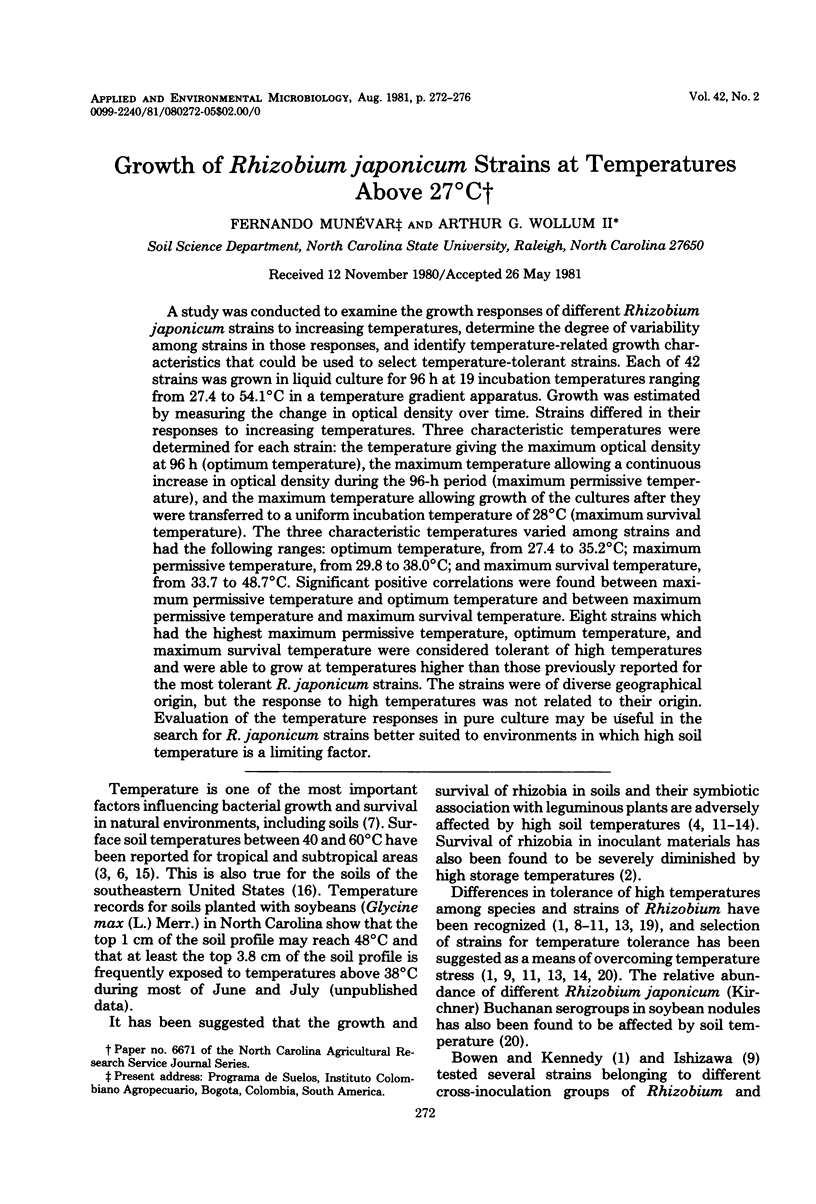
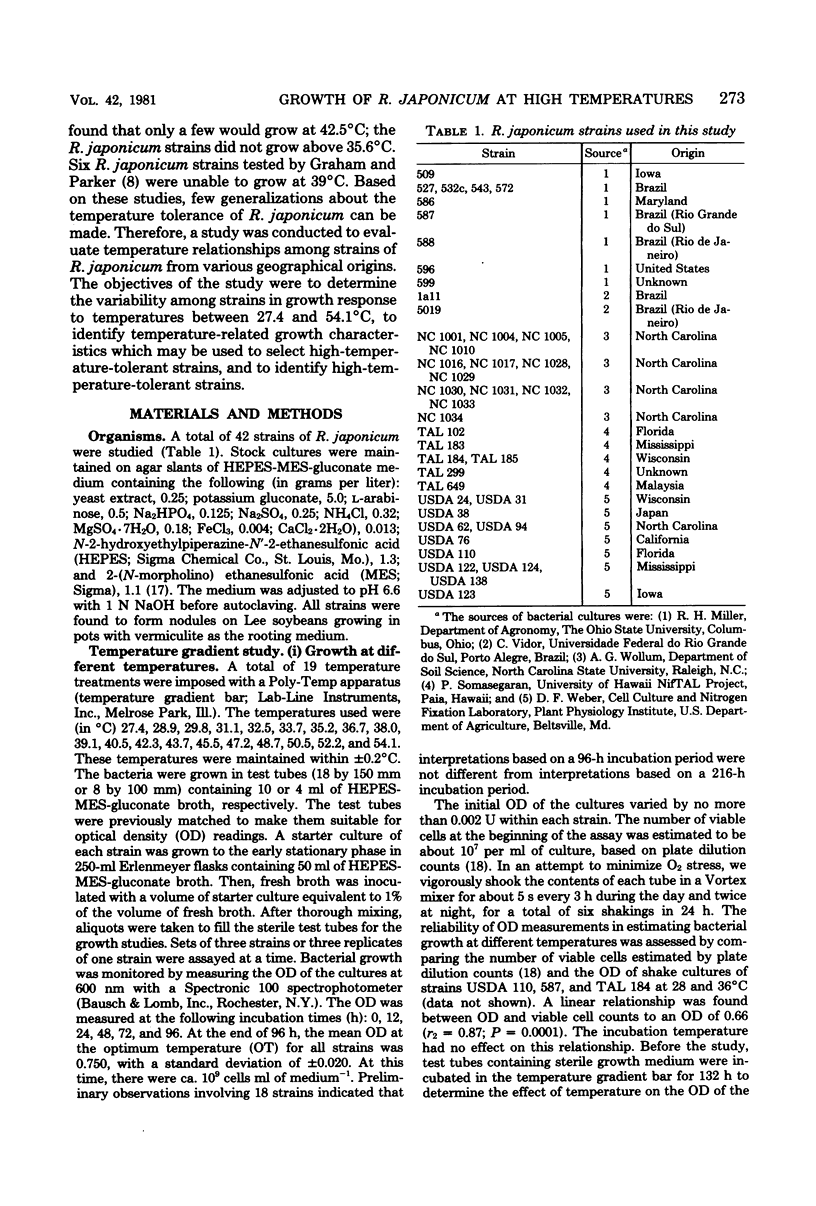
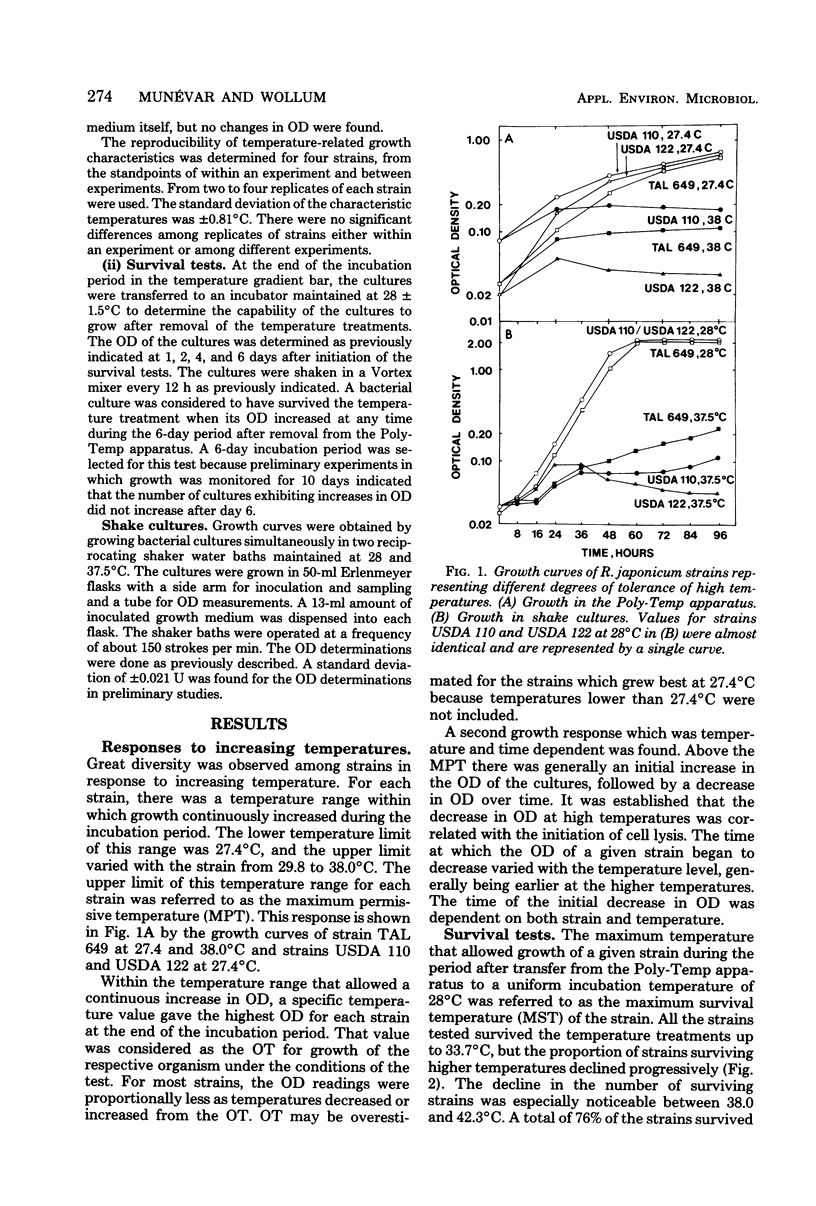
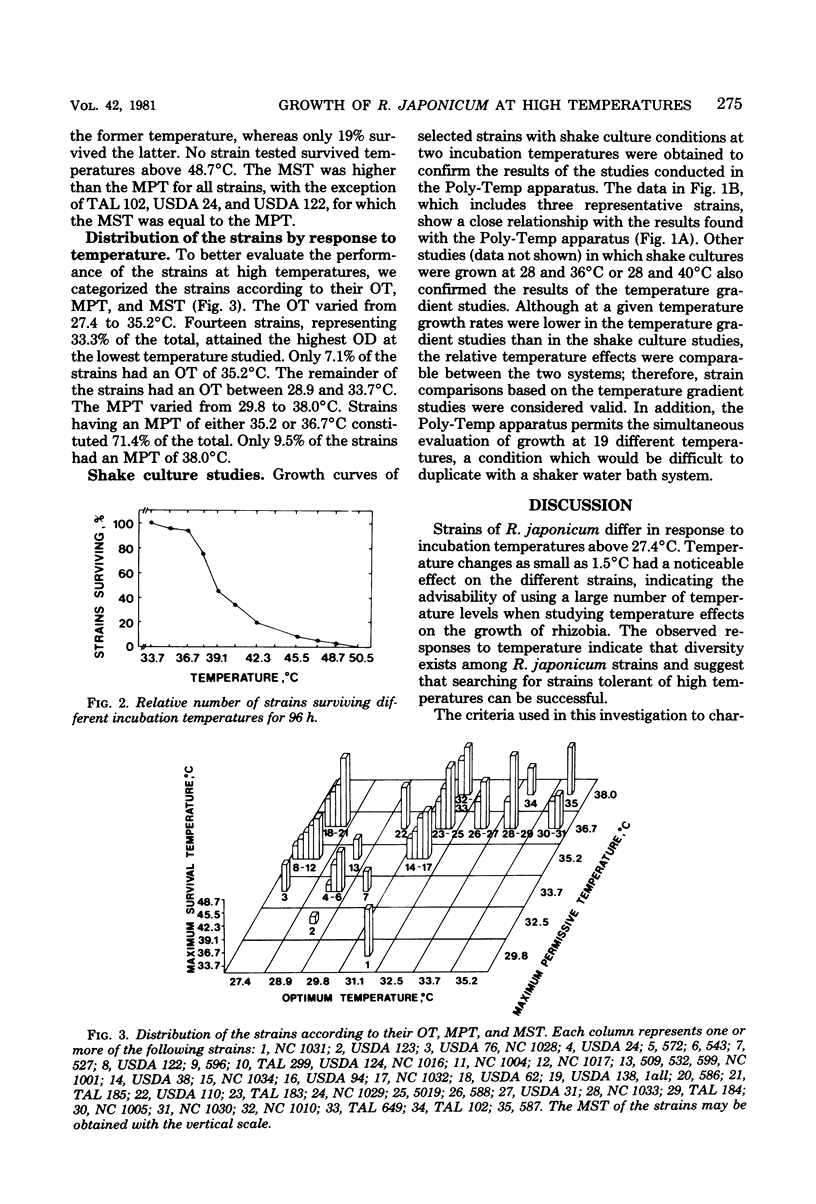
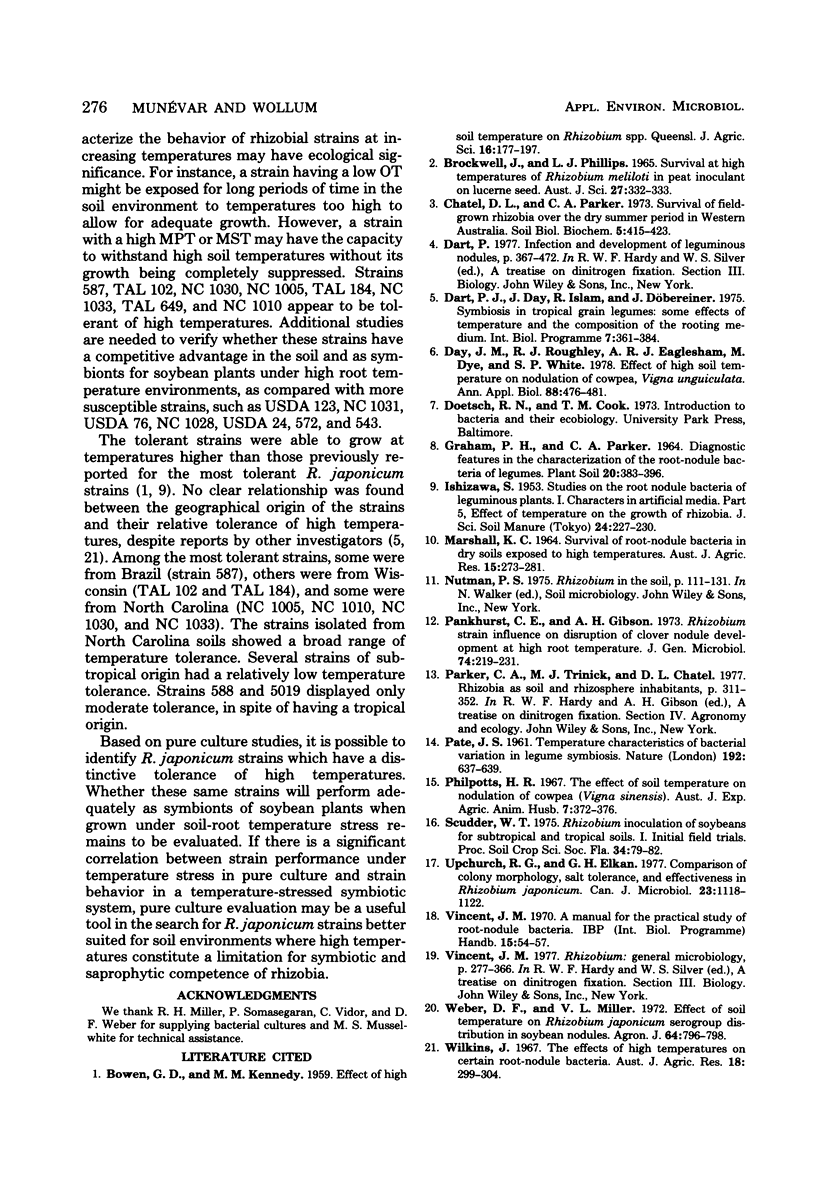
Selected References
These references are in PubMed. This may not be the complete list of references from this article.
- Upchurch R. G., Elkan G. H. Comparison of colony morphology, salt tolerance, and effectiveness in Rhizobium japonicum. Can J Microbiol. 1977 Sep;23(9):1118–1122. doi: 10.1139/m77-167. [DOI] [PubMed] [Google Scholar]


